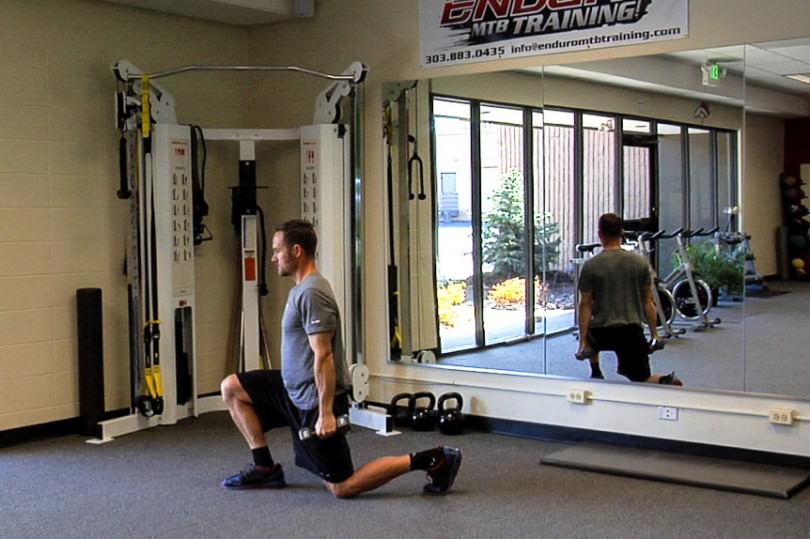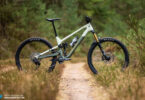As human beings, we are innately born with the internal desire to move. As babies, we didn’t have to think about “how” to move, or even “try” to move, we just moved. We can learn a lot by observing babies and transfer these insights into our mountain bike winter training. Find out about the essential movement patterns to make you ride better and faster!
It’s fascinating to watch babies as they learn how to crawl, stand and finally walk. Built into that progression of being helpless to being fully mobile, a child’s nervous system has silently been hard at work learning, creating, and becoming proficient at movement patterns. These efforts are the foundation of movement, the learning of movement and eventual mastering of highly organised movements. You can see it expressed in different forms such as sports, dance, playing an instrument and, of course, riding a mountain bike with great amount of speed and steaz!
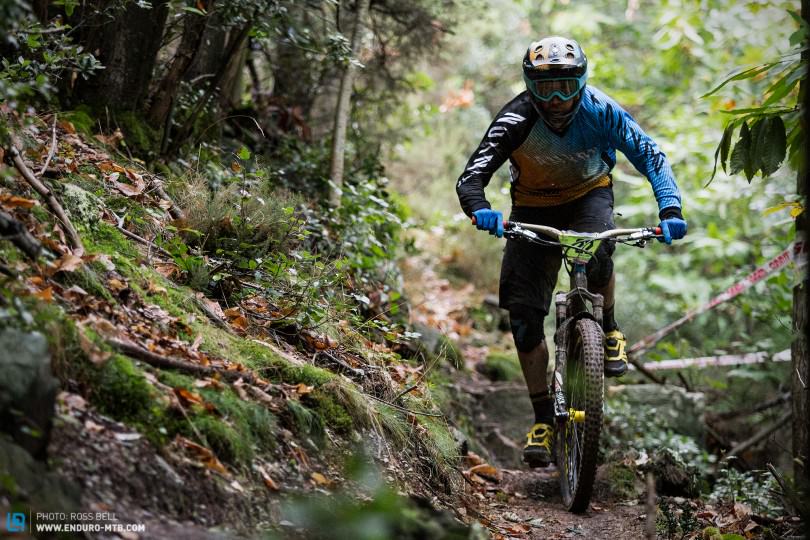
Speaking of speed and steaz… go watch your favourite pro rider in their latest video. If you can, watch it in slow motion. What you will see is a symphony of perfected movement patterns simultaneously moulding and blending together with little or no conscious thought, being totally controlled by the brain and nervous system. Essentially what you see in that video is an athlete who over decades of nervous system maturation, muscle and connective tissue development, and massive amounts of “body feedback” has learnt to react to stimuli in a micro-milliseconds! Truly awesome! OK, so now let’s bring it to you.
Since all of you reading this are adults, by now you have achieved a certain level of movement mastery. In order to take full advantage or your full athletic potential as an athlete and mountain biker, you need to be proficient in seven fundamental movement skills that Paul Chek calls the “Primal Movement Patterns.” The same patterns that were developed from the time you were a baby!
Here are the seven moves that every mountain bike athlete should be proficient at: (For even more, check out the MTB Athlete Training System
1. Squat
It’s pretty obvious why the squat pattern is vital to human performance. We use it to pick things up, go to the bathroom, pick up our kids, move objects, and ride our bikes. It’s vital for your squat to be intact because it uses the three most important joints in the body, the ankles, knees and hips. Without proper mobility and stability of these joints, your skill as a rider may not only diminish, but you might also be prevented from learning new skills as a rider.
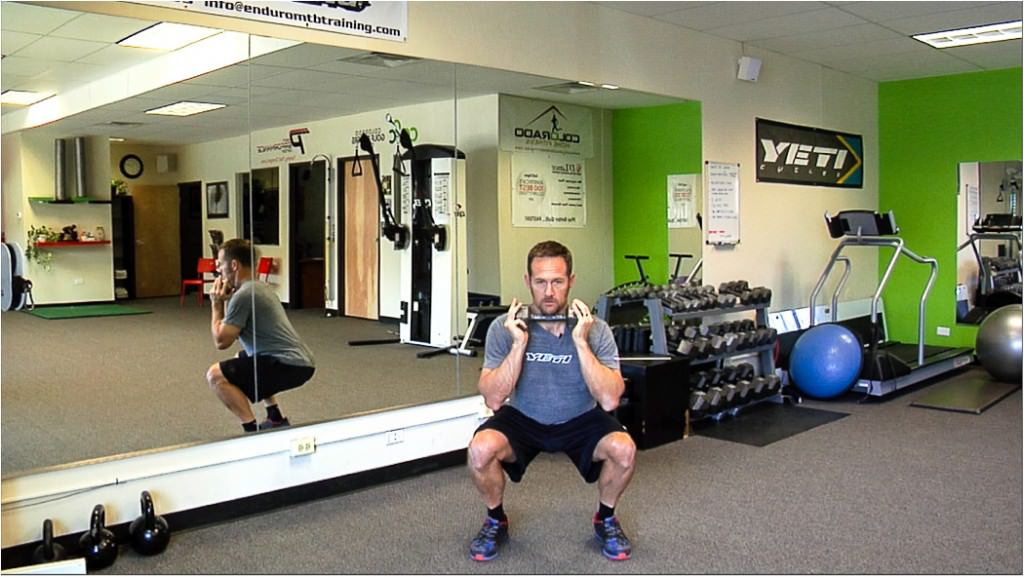
2. Lunge
One way to think of a lunge is as a split stance squat. The lunge position is used 100% of the time when riding downhill, one foot is always in front of the other. This makes learning how to switch feet crucial to maintaining symmetry in the body from the pelvis to the head and feet.
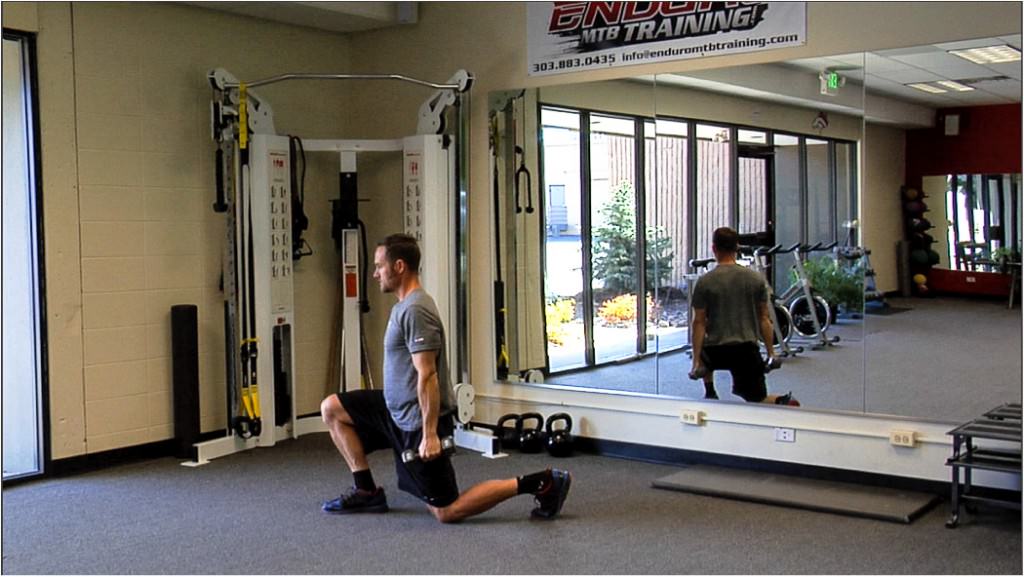
3. Bend
This is an obvious building block to being able to squat and lunge effectively. Without a solid functioning bend or hip hinge, most athletes will suffer with a poor squat and/or lunge. From a mountain biking standpoint, it is crucial to our ability to get into a full downhill position and make the strong cornering position needed to shred. It is also one of the biggest issues that I see people struggle with, simply because of the amount of time spent in a seated position every day. Sitting is killing our bodies and its ability to express movement!
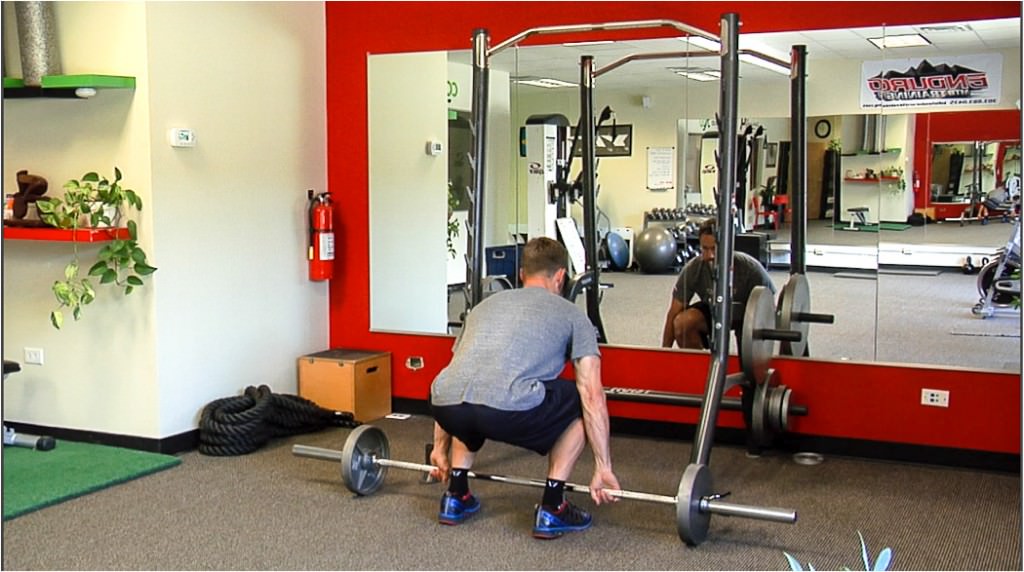
4. Push
The push move is important for everything from self-defense, moving objects, reaching and for preventing us mountain bikers from eating our handlebars! The shoulder is the body’s most complex joint. If not properly aligned, a poorly operating shoulder can wreak havoc on your riding and show up in the form of pain, instability, and common issues like arm pump.
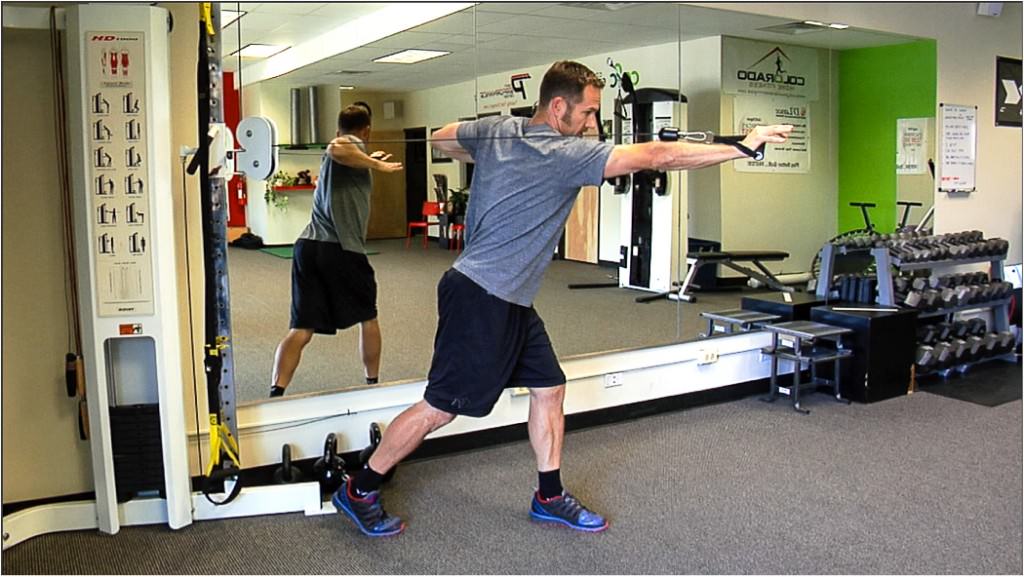
5. Pull
The pull is the push’s “brother with another mother” so to speak! The pull move still involves the shoulder except it plays an important role in creating optimal posture and the overall position of the thorax (rib cage). For us riders, it is crucial because the pull muscles are the connection between the lower body (feet/legs) and the upper body (hands/arms) which helps power get from your hands to your feet and visa-versa.

6. Twist
Ok, what’s the first thing you think of when you see the word “twist?” A 1980’s break dancer? A baseball pitcher? A golfer? In any case, you’d be correct, but as riders, we too have to “twist” when we ride. Recent research indicates that when we are in a split-stance, downhill position, our bodies are resisting or preventing rotation. The attack position actually imposes a rotational movement on the pelvis and spine, while our muscular system keeps the pelvis aligned straight… essentially creating “anti-rotation or anti-torsion” in effect.
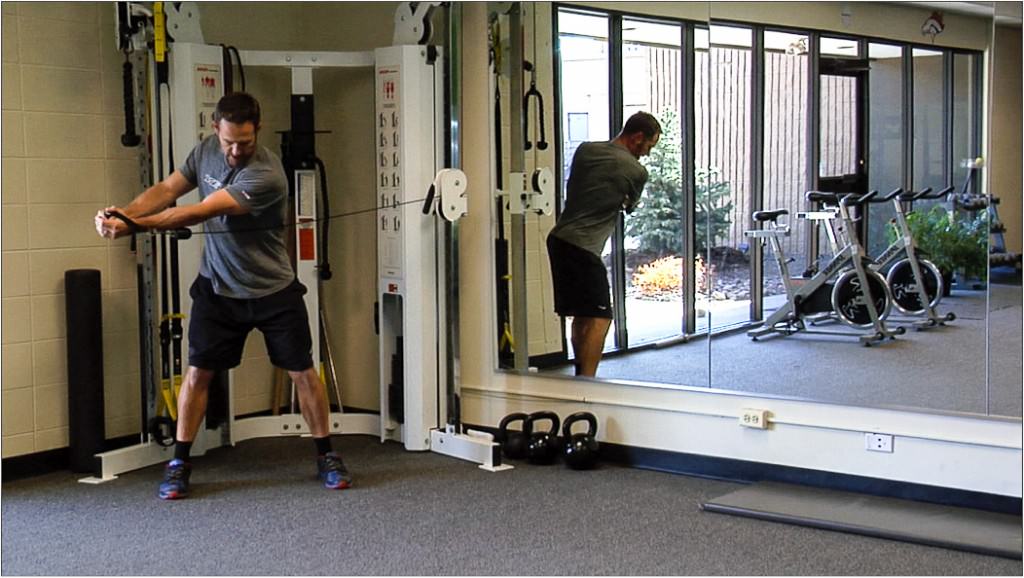
7. Gait
Is simply walking. Yes for most mountain bikers, there isn’t much walking per-se, but during an enduro race and for some of those epic backcountry rides, there is plenty of “hike-a-biking”, and it’s imperative that we have a strong ability to walk with good form so we conserve as much energy as possible.
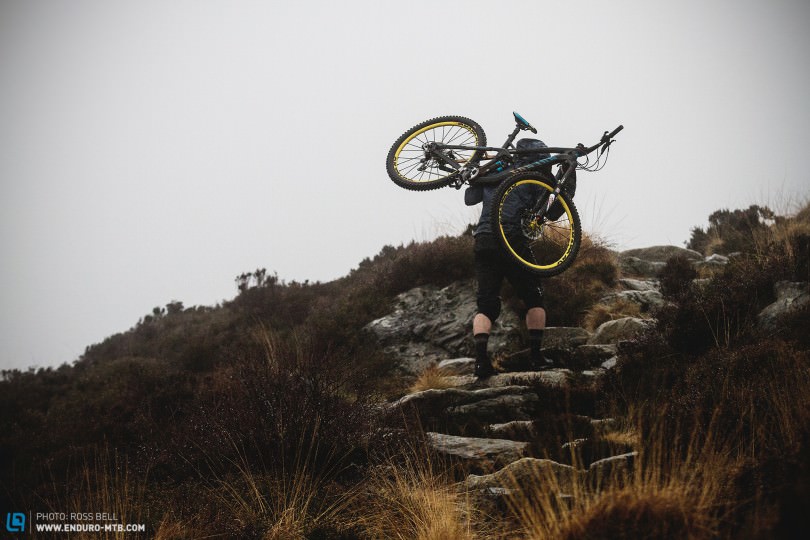
So as you can see, the body from day one is programmed to become efficient at these Primal Movement Patterns and the brain and nervous system will do whatever it can to keep you moving. We encourage you to work hard at performing these seven moves by practising them frequently. If you do, not only will you see a difference in your riding and help you learn more skills, but it will play a major role in your ability to take your athletic performance to another level and help you stay injury free!
Missed the 2 previous articles? Find them below:
Winter Training Part I – End of Season Recovery.
Winter-Training Part II – Setting Goals
Make sure to check out Dee’s MTB Athlete Training System.
Did you enjoy this article? If so, we would be stoked if you decide to support us with a monthly contribution. By becoming a supporter of ENDURO, you will help secure a sustainable future for high-quality mountain bike journalism. Click here to learn more.
Words: Dee Tidwell Photos: Enduro MTB Training / Ross Bell



